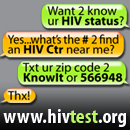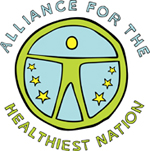Partner Services Factsheet
Partner Services
Partner services are a broad array of services that should be offered to persons with HIV or other sexually transmitted diseases (STDs) and their sexual or needle-sharing partners. By identifying infected persons, confidentially notifying their partners of their possible exposure, and providing infected persons and their partners a range of medical, prevention, and psychosocial services, partner services can improve the health not only of individuals, but of communities as well.
New Recommendations for Partner Services Programs
On October 30, 2008, CDC released electronically its Recommendations for Partner Services Programs for HIV Infection, Syphilis, Gonorrhea, and Chlamydial Infection to guide the delivery of partner services. The Recommendations were subsequently issued in the November 7, 2008, edition of CDC's Morbidity and Mortality Weekly Report (MMWR).
These new Recommendations eliminate inconsistencies and differences in the earlier two documents and incorporate updated information derived from research and program experience, and from recently available technologies (e.g., rapid HIV tests), and new program options (e.g., expedited partner therapy (EPT) for partners of patients with gonorrhea or chlamydia).
The Recommendations also highlight the importance of program collaboration and service integration. Co-infection with HIV and one or more other STDs is common. Persons diagnosed with HIV should be tested for other STDs and vice versa. Many persons at risk for these infections are also at risk for other infectious diseases, such as tuberculosis (TB) and viral hepatitis, as well as a variety of other health conditions. Partner services offer STD, HIV, and other public health programs an excellent opportunity for collaborating to deliver comprehensive services to clients, improve program efficiency, and maximize public health impact.
Who Will Use CDC’s New Recommendations?
Program managers who oversee partner services programs at state and local health departments are the primary target audience. HIV prevention community planning groups, STD program advisory bodies, capacity-building assistance providers, community-based organizations, and clinical care providers will likely find it of interest.
Who Should Receive Partner Services?
CDC strongly recommends that all persons with newly diagnosed or reported HIV infection or early syphilis receive partner services with active health department involvement. Persons diagnosed with gonorrhea or chlamydial infection are also suitable candidates for partner services; however, disease burden and resource limitations may prevent direct health department involvement. Health departments may need to limit their direct involvement in partner services for gonorrhea and chlamydial infection to selected high-priority cases and employ other strategies for the remainder.
Principles of Partner Services
The following principles serve as the foundation for providing partner services:
- Client centered. All steps of the partner services process should be tailored to the behaviors, circumstances, and specific needs of each client.
- Confidential. Confidentiality should be maintained and is essential to the success of partner services. Confidentiality also applies to data collected as part of the partner services process. When notifying partners of exposure, the identity of the index patient must never be revealed, and no information about partners should be conveyed back to the index patient.
Disclosed private information should be held in strict confidence, both because of its private nature and as a sign of respect for the person who is volunteering to share the information to help others. Real or perceived breaches can endanger persons being served, who might face stereotyping; social isolation; loss of social or financial support; barriers to accessing housing, employment, and various social and medical services; and physical or emotional abuse. Breaches also can undermine community trust in and access to important public health programs and services. - Voluntary and non-coercive. Participating in partner services should be voluntary for both infected persons and their partners; they should not be coerced into participation.
- Free. Partner services should be free of charge for infected persons and their partners.
- Evidence based. Partner services should be as evidence based as possible
- Culturally, linguistically, and developmentally appropriate. Partner services should be provided in a nonjudgmental way and be appropriate for the cultural, linguistic, and developmental characteristics of each client.
- Accessible and available to all. Partner services should be accessible and available to all infected persons regardless of where they are tested or receive a diagnosis and whether they are tested confidentially or anonymously. Because of the chronic nature of HIV infection, partner services for HIV should not be a one-time event. They should be offered as soon as HIV-infected persons learn their serostatus and should be available throughout their counseling and treatment. HIV-infected persons should have the ability to access partner services whenever needed.
- Comprehensive and integrative. Partner services should be part of an array of services that are integrated to the greatest extent possible for persons with HIV or other STDs and their partners.
Key Points of Emphasis in the New Recommendations
CDC’s new Recommendations outline a range of actions partner services programs should take to maximize the efficiency, quality, and impact their activities have on disease transmission in the community. In addition to the recommendations in the section describing who should get partner services, key points made in the Recommendations include the following:
- Partners can be notified by health department specialists, thus protecting the identity of the infected person, or they can be notified by the infected person. Regardless of which approach is used, the health department should be directly involved in the construction of options and the provision of tools and resources to maximize notification.
- Programs should use surveillance data and disease reporting systems to assist with identifying newly diagnosed persons who are potential candidates for partner services.
- At a minimum, health departments should use provider- and aggregate-level data from their surveillance systems to help guide partner services. If appropriate security and confidentiality procedures are in place, health departments should strongly consider using individual-level data to maximize the number of persons offered partner services.
- Programs should create strong referral linkages with care and prevention services providers to ensure that the needs of patients and their partners are addressed. Follow-up should be conducted to verify that HIV-infected individuals have accessed medical care or HIV case management at least once.
- Program managers should assess and eliminate barriers to programmatic collaboration and service integration within their jurisdictions, with the goal that, at a minimum, services are well integrated at the client (service delivery) level.
- Programs should evaluate program performance and identify areas that need improvement.
- Page last reviewed: October 30, 2008
- Page last updated: October 29, 2008
- Content source: Centers for Disease Control and Prevention
Contact Us:
- Centers for Disease Control and Prevention
1600 Clifton Rd
Atlanta, GA 30333 - 800-CDC-INFO
(800-232-4636)
TTY: (888) 232-6348
24 Hours/Every Day - cdcinfo@cdc.gov




